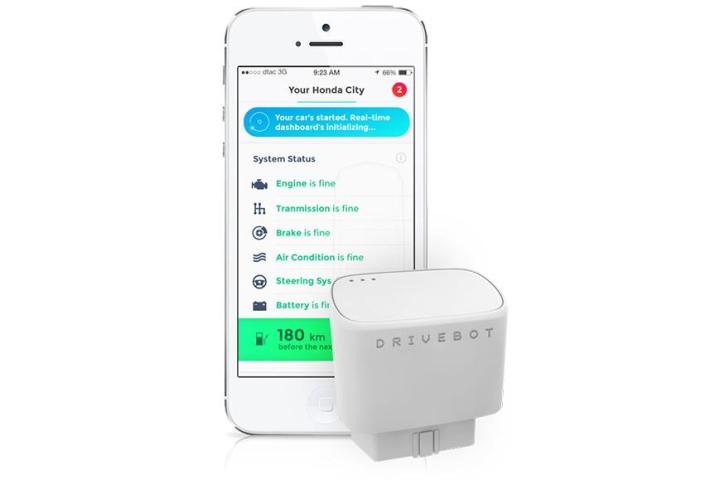
The white device plugs into a car’s OBD-II (on-bard diagnostic) port, which is included in all cars and light trucks sold in the U.S. after Jan. 1, 1996. Once it pairs with your smartphone via Bluetooth, your car’s health (e.g., engine, transmission, brake and steering system status) can be monitored via the Drivebot app for iOS and Android phones.
Related: Zubie lets you monitor your car – and loved ones – with your smartphone
Beyond helping drivers stay on top of their automobile’s health so they can avoid costly “too late” visits to the auto mechanic, the Drivebot is meant to help save on fuel costs and time on the road by finding the best driving routes and offering tips for improved driving habits.
The Drivebot will retail for $119, but it’s available at a discount on its Indiegogo page. The team of five engineers doesn’t seem to mind resellers, as the crowdfunding page has a $1,300 package aimed at that specific audience, which offers 20 Drivebot devices at about 50 percent off retail.
The Indiegogo campaign, which began on Oct. 20 and closes on Nov. 29, has already raised more than $42,000 from more than 480 backers (the goal was $35,000). This unlocks the $40,000 stretch goal: a “special edition” Drivebot.
Shipments of the Drivebot and the launch of the iOS app are slated for February 2015, with the Android app expected to launch in March.
Editors' Recommendations
- How to find out if your car has been recalled
- This simple seat clip could help save the lives of kids left in sweltering cars


